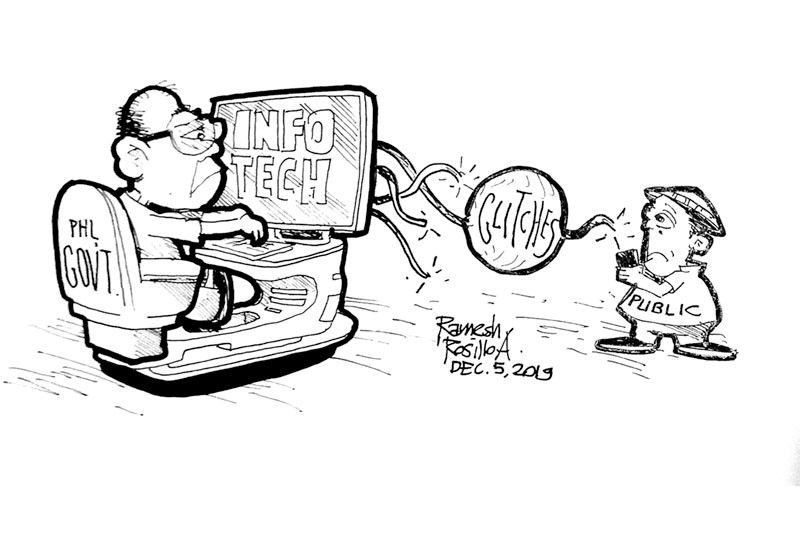EDITORIAL - Technical problem

With the unprecedented onslaught of modern technology, it is now easier for the national and local governments to communicate with its people on any development the public needs to know about the state of the nation, city or town.
For many years now, every government agency has learned to embrace technology as part of its daily operations. Publication of, say, new guidelines or policies is now being published on websites or on social media, or sent to mobile phones of subscribing public.
However, despite the advent of new technology, glitches remain. And these problems ranged from delay in sending information because of technical malfunction to the simple issue of the lack of some to own, say, gadgets to access such information.
The Philippine Atmospheric, Geophysical and Astronomical Services Administration was once accused of inaccurate dissemination of information several years ago when its forecast of heavy rains in certain places turned out to be ‘erroneous.’
Just recently, as Typhoon Tisoy was starting to barrel through Bicol Region, the National Disaster Risk Reduction Management Council was in the thick of spreading advisories to the public about the situation in areas set to be affected by the storm.
Some would think it was normal part of NDRRMC’s mission of informing the public of the storm’s serious effects. But there was a problem. And such problem had something to do with the delay of the agency’s message to reach the public.
Many were dismayed because the message was almost a day late. The NDRRMC sent the advisory in the afternoon of Monday but many received it only at noon the next day, which prompted some netizens to criticize the agency on social media.
There is really a need for government agencies to enhance their technological capabilities if they want to serve the public well. Yes, technical problem can happen anytime. But they should see to it alternatives are ready for services to continue.
- Latest
























